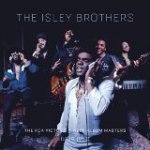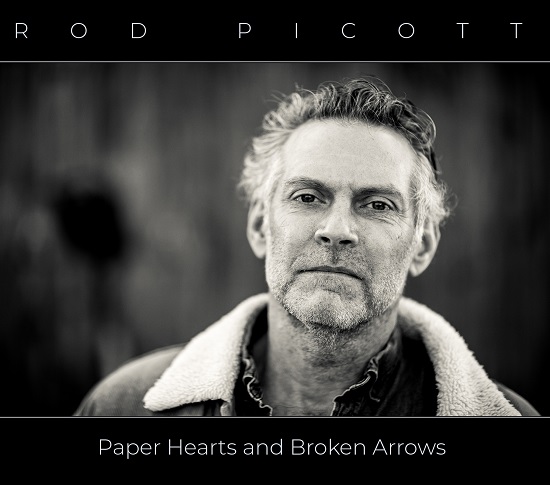
Every so often, an album comes along that isn’t just a great collection of songs played beautifully; an album that pushes a few personal buttons and maybe touches a few raw nerves as well. Rod Picott’s ‘Paper Hearts and Broken Arrows’ is one of those albums that creates a very personal connection. Maybe it’s an East Coast thing between Maine in the USA and Fife in Scotland; you don’t need to look too hard to see the parallels and ‘Washington County’ paints a picture of an area where genteel resorts sit side by side with poverty-stricken former industrial towns and villages. They’re three thousand miles apart, but it’s the same experience.
Just taking a step to one side for a moment, as music has moved into the digital realm, so have some of the ways of getting it out there and letting people know about it. It’s not so long since review copies arrived as CDs (or vinyl if you want go back a bit further) with an A4 press release, through the letterbox. Now they arrive in your inbox and an artist or PR team can include much more material with no extra distribution costs. Which means that artwork and credits, additional photos and lyric sheets are fairly common now and there’s a relatively recent addition of the artist’s ‘track-by-track’ notes. Reviewers should rely more on their ears and instincts than press releases, but you can sometimes pick up a useful insight into the artist’s vision. In the case of Rod Picott, there’s always something worth reading when he puts fingers to keyboard.
The story behind ‘Valentine’s Day’ on this album is a perfect example. It’s a very honest song, painfully so, that’s stripped back to the raw basics of acoustic guitar and cracked vocal. Rod’s notes tell us that the original recording was a full band version that sounded “wonderful – and completely wrong”, like “an Eagles track with a guy that can’t really sing”; the arrangement was too perfect and in Rod’s words again, “for me, perfect is almost always wrong”. Producer Neilson Hubbard liked the stripped-back version and three takes later it was in the can.
There are a couple of strands that run through the album, Rod’s acceptance of a spell of single life that surfaces in the opening song ‘Lover’, ‘Valentine’s Day’ and ‘Mona Lisa’ where the loneliness exists for creatives even inside a relationship, and the autobiographical songs ‘Lost in the South’ and ‘Mark of Your Father’ which both reference his background and his father with ‘Lost in the South’ using his father as a jumping-off point for Rod’s early experiences in the South, while ‘Mark of Your Father’ explores the complicated nature of father-son relationships using Marvin Gaye as an example of how bad things can really get.
And then there are a few songs taking their inspiration from other areas. The dark and menacing ‘Revenuer’, with its dirty guitars and screaming slide solo is inspired by a Taylor Brown novel and explores that thin line between right and wrong when your choices are limited and times are hard. ‘Frankie Lee’ is an outlaw song where the main character always accepts his ultimate fate as the electric chair and, like a lot of Rod’s more stark songs, wouldn’t sound out of place on The Boss’s ‘Nebraska’ (and I know I’ve made that link before).
Rod’s a fan of boxing and ‘Sonny Liston’ is a song that pulls at some of the threads running through a lot of Rod’s work. Sonny Liston was a complex character, torn between the world he came from and the dubious world of professional boxing and gangland connections that he joined without ever gaining the respect of either. The man who took his world title, Cassius Clay/Muhammad Ali is better remembered now, but the Sonny Liston story is full of loose ends, links to organised crime, drugs, sudden death and astonishing sporting prowess. Rod weaves all of these strands into a powerful and economic narrative with a simple alliterative and assonant chorus: “Two big fists pumping like pistons, nobody punched like Sonny Liston”.
Fourteen albums in, Rod Picott is still pushing at the boundaries of his craft, still looking for ways to create songs that mean something, to him and to his audience. Let’s not use the word ”perfect” to describe ‘Paper Heart and Broken Arrows”; let’s go with an outstanding collection of beautifully-crafted songs delivered by outstanding musicians and a singer whose voice cracks with power and emotion. OK with you?
‘Paper Hearts and Broken Arrows’ is released in the UK on Friday June 10on Welding Rod Records.
No videos yet for songs on the album, but here’s a link to a live performance of the fabulous ‘Rust Belt Fields’:
 There’s no other way of saying this; 2020 has been an awful year and it’s been hard to take any kind of consolation from it. Anyone in the world of music has had to look long and hard to take any positives out of this situation. For many of us, it’s been an opportunity (or maybe a necessity) to look in the rear-view at some of the things we did in the past; gigs that we went to, albums that we bought and people that we met. I’ve moved around the country a fair amount and, in the era before media players and streaming, I had to limit the music I could move around with me. I’m not saying I was limited to five albums or, later, CDs, but these are albums that always made the cut and they’ve still had the same comfort blanket value through two lockdowns. In chronological order:
There’s no other way of saying this; 2020 has been an awful year and it’s been hard to take any kind of consolation from it. Anyone in the world of music has had to look long and hard to take any positives out of this situation. For many of us, it’s been an opportunity (or maybe a necessity) to look in the rear-view at some of the things we did in the past; gigs that we went to, albums that we bought and people that we met. I’ve moved around the country a fair amount and, in the era before media players and streaming, I had to limit the music I could move around with me. I’m not saying I was limited to five albums or, later, CDs, but these are albums that always made the cut and they’ve still had the same comfort blanket value through two lockdowns. In chronological order:
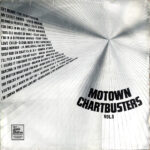 “Motown Chartbusters Vol. 3” – Various Artists
“Motown Chartbusters Vol. 3” – Various Artists
I know; it’s a compilation, but what a compilation. This was the soundtrack of my teenage years; every youth club disco, every party, every time I went to a friend’s house, this album was there. It was perfect timing, with a 1969 release just at the time that I really started to listen to music properly and had a few quid from my paper round to actually buy records.
The Chartbusters series started in 1967; if you’re a cynic, you might accuse Motown of trying to recycle material but it is the music business and it’s fair to say that this series was packed with hits. It was basically a singles industry at that time, so a compilation from a successful company made a lot of sense. So why Vol. 3? Well, the sleeve design evolved as the series progressed, reflecting current social themes, but Vol. 3 was the one where the designers nailed it; it’s simple, bold and incredibly striking and the musical content lived up to the standard of the design.
If a sixteen-song album starts with Marvin Gaye’s “Grapevine” and ends with Smokey’s “Tracks of my Tears”, there’s a lot of wiggle room for the other fourteen songs. Throw in a couple of Stevie Wonder classics, The Temptations’ “Get Ready” and Edwin Starr’s “Stop Her on Sight” and you’ve already got a classic compilation. Take a look at the entire album and it’s studded with classics and minor classics. That’s why it will always have a place in my elite albums.
I bought this the week it was released in September 1977 and took it with me to Dundee for my second year at University. I was in a shared room, but it was with Kev, my room-mate from my first year. We both played guitar and had some musical tastes in common; thankfully Steely Dan was one of those shared tastes. “Aja” was played a lot and we may have smoked some recreational substances, which may have enhanced the listening experience. In my final two years, I had my own room and, again, “Aja” didn’t stay in its sleeve very long. It was starting to look a little worse for wear. You can read the next part of this story in this piece; I don’t want to do it in detail again here. Let’s just say it burned “Aja” into my consciousness and since that time the album’s been a constant companion.
I’d been a Dan fan since the early days and, by this time, I knew to expect the unexpected but this album was something else. They had seven beautifully-constructed and slightly sleazy songs (ok, maybe more than slightly sleazy) and spent studio time with the best session musicians in the world putting together versions of the songs, picking out the seven favourites for the album. They started as jazzers playing rock and with “Aja” they arrived at jazzers playing jazz or maybe jazz-funk; going back to their roots. Like all of the albums mentioned here, this should be in everyone’s collection. It was certainly in the collection of the next band.
I’m Scottish; I’m proud to be a Scot and I used to love the times when the music industry radar periodically located Scotland on the UK map. The mid-to-late eighties was one of those periods; Deacon Blue were one of the bands to be signed and they’re still recording and gigging today. I saw them at Cornbury a couple of years ago and they sounded great with songs covering a period of thirty years. The band members mostly have new day jobs now; Ricky Ross is a radio broadcaster and Dougie Vipond is a TV presenter with BBC Scotland, but that’s all irrelevant when the sticks click and the band fires up.
I bought “Raintown” on vinyl originally and I still have that copy now. The title song was a tribute to Glasgow that spliced Blue Nile with Springsteen to create a wide canvas sound that came to define the band. As much as I loved that song, and the anthem “Dignity”, it was “When Will You (Make my Telephone Ring?)” that I connected with. It was a soul song (they even had Jimmy Helms on BVs) and it was over the top and gorgeous. It was part of an album that you needed to listen to from start to finish (turning over the vinyl halfway through), because you wouldn’t want to miss out on the opener “Born In a Storm” or the yuppie tale “Chocolate Girl”.
And you know that the Steely Dan connection is “Deacon Blues” from “Aja”, obviously.
When the Britpop wars broke out, I was missing in action. Why would anyone hitch themselves to bands that were so obviously influenced by sixties pop. Oasis was The Beatles without the subtlety and Blur was an arch Goldsmiths-enabled Kinks tribute band. We had to be better than that and I’d already committed myself to a band that had much more in common with the East Midlands surroundings I knew as a teenager. The band was from Sheffield and the songs reflected life in the North Nottinghamshire/Derbyshire/South Yorkshire area; Blur and Oasis were copying sixties bands while Pulp felt much more like a musical interpretation of Stan Barstow’s short stories.
“His ‘n’ Hers” was the breakthrough album: it wasn’t the album with the anthems that followed it and turned Pulp into an arena and Glastonbury-headlining band. “Different Class” featured “Common People” and “Disco 2000”, both complete bangers and remixed to within an inch of their lives; as much as I loved them, I still identified much more with the characters and the narratives of “Lipgloss”, “Babies”, ”Acrylic Afternoons” and “Do You Remember the First Time?”. This is still my favourite Pulp album and probably my favourite ‘Britpop’ album.
Only a few months after “His ‘n’ Hers” and so different. If Sheffield defined Pulp, then Bristol defined Massive Attack. The first Massive Attack album “Blue Lines” three years earlier was already firmly embedded in my consciousness. “Unfinished Sympathy” was a classic single and Shara Nelson had a perfect voice to front up the songs. Massive Attack wasn’t a prolific band (quality rather than quantity) and by the time “Protection” came along, Shara had moved on, replaced by a mix of singers and rappers including Tracey Thorn, Tricky, Nicolette and Horace Andy. Along with close neighbours Portishead, Massive Attack defined trip-hop, mixing influences from hip-hop and dub, creating a sound that was both ambient and punchy.
The title song has always pushed my buttons; it’s gorgeous. The bass is thunderous (particularly for a slow ballad), while the guitar, keys and vocals are all crystal clear with a shimmering touch of reverb. The mix is full of space and all of the individual elements stand out. And there’s Tracey Thorn’s almost effortless but incredibly powerful vocal. It’s a classic song and it sets the tone for the album; loads of punchy bass and spacy, dubby mixes – trippy even. The kind of music that might accompany a spliff or two. Which takes us back to my second selection.
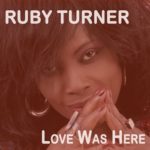 Twenty albums in twenty years; that’s not bad going, particularly when you have a day job fronting up for Jools Holland’s Rhythm and Blues Orchestra. You probably know that Ruby Turner has a fabulous voice, but she’s much more than the chanteuse with Jools Holland; Ruby Turner is a genuine British soul phenomenon with a career stretching back into the mid-eighties and some astonishing live and recorded performances (if you haven’t already heard it, check out her version of “Stay With Me Baby”). So, what’s the deal with Ruby’s latest album, “Love Was Here”?
Twenty albums in twenty years; that’s not bad going, particularly when you have a day job fronting up for Jools Holland’s Rhythm and Blues Orchestra. You probably know that Ruby Turner has a fabulous voice, but she’s much more than the chanteuse with Jools Holland; Ruby Turner is a genuine British soul phenomenon with a career stretching back into the mid-eighties and some astonishing live and recorded performances (if you haven’t already heard it, check out her version of “Stay With Me Baby”). So, what’s the deal with Ruby’s latest album, “Love Was Here”?
A couple of things; this is mainly about Ruby recognising the influence of the people she listened to as she grew up and trying to create the feel and grooves of those artists without creating carbon copies. The second thing is that Ruby has pulled together a fabulous soul band (mainly from Sheffield, a very fertile ground for British soul musicians). The band is: Kat Eaton (backing vocals), Nick Atkinson (guitars), Joe Glossop (keys), Jeremy Meek (bass) and John Blease (percussion) – Google any one of them and see just who they’ve worked with. This is a quality outfit, and they do what quality outfits do; they create arrangements that support the song and the vocal perfectly without any fuss or showboating.
The songwriting team is Kat Eaton and Nick Atkinson and between them they pull off the very clever trick of creating a groove and style that suggests a particular artist while still sounding fresh and original. Of course they have a huge advantage in that the songs are being delivered by one of the UK’s finest soul voices. The songs and the arrangements pull in structural elements from the styles they’re emulating; there are a lot of examples of the old gospel technique of call and response, not just with vocals but also between instruments as well. The other technique that appears a lot is unison playing in various instrumental configurations.
You can listen to the songs yourself and work out which song is influenced by which musical hero; there are nods in the direction of Al Green, Curtis Mayfield, BB King and Ry Cooder mentioned in the sleeve notes but you’ll also find references to Marvin Gaye, Sam Cooke and Otis Redding (and probably many more if you dig deep enough). It’s a fitting tribute to the pioneers of soul.
“Love Was Here” actually started life as an EP with four or five songs, but gradually grew to full album status over a period of eighteen months. The songs hang together well and it’s generally a coherent piece of work, apart from the bonus track “Chasing Love” from the film “The Host”. It’s the only song that wasn’t recorded at The Foundry in Sheffield and it’s very different, featuring a haunting solo violin and orchestral backing. It’s not better or worse than the other ten songs; it’s just very different.
“Love was Here” is the sound of great musicians lovingly evoking their musical influences, fronted up by a great British soul voice and it’s out now.
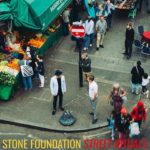 OK, let’s get this straight from the start. It’s Stone Foundation; not The Stone Foundation. It’s an important distinction because the name has layers of meaning. It’s a reference to the solid bond uniting the core of the band: Neil Jones, Neil Sheasby, Phil Ford and Ian Arnold. But it’s also a reference to the foundations that underpin the band, the songwriting partnership of Neil Jones and Neil Sheasby and the locked-in, rock-solid rhythm section of Neil Sheasby and Phil Ford. That’s not to understate the importance of Ian Arnold’s keyboards or Rob Newton’s congas, but none of it can happen without the purring V8 (I know, mixed metaphors) engine.
OK, let’s get this straight from the start. It’s Stone Foundation; not The Stone Foundation. It’s an important distinction because the name has layers of meaning. It’s a reference to the solid bond uniting the core of the band: Neil Jones, Neil Sheasby, Phil Ford and Ian Arnold. But it’s also a reference to the foundations that underpin the band, the songwriting partnership of Neil Jones and Neil Sheasby and the locked-in, rock-solid rhythm section of Neil Sheasby and Phil Ford. That’s not to understate the importance of Ian Arnold’s keyboards or Rob Newton’s congas, but none of it can happen without the purring V8 (I know, mixed metaphors) engine.
And the rhythm section (along with the rest of the band) can turn on a sixpence as well. “Love Rediscovered” has the band alternating tempos and time signatures in a jazz-inflected piece with gentle ensemble horns and some lovely background sax fills. In many ways it’s the least typical song on the album, but it has a strand of the common thread of social commentary running through it. In that respect it’s a lot like the Marvin Gaye and Curtis Mayfield social consciousness albums of the early seventies.
The big ticket news item is always going to be the involvement of Paul Weller as producer, co-writer, player and singer. On the two previous albums, the band have attracted some high-profile guests, but nothing quite in this league. The most obvious influence is in the current single “The Limit of a Man”, which has hints of Style Council, although there are suggestions of Brenton Wood’s “Gimme Little Sign” and Curtis Mayfield’s “Move On Up” in there as well. It’s a gloriously upful song and should, by rights, be all over the radio.
Paul Weller aside, there are guest appearances from Bettye Lavette on the midtempo “Season of Change”, full of horn stabs and parping baritone sax, and William Bell on “Strange People” with, strings, Hammond, horns, a flute solo and even a bit of cowbell. Both singers still sound fabulous. On the ‘business as usual’ front, Neil Jones’ vocals seem to get better with each album and Neil Sheasby has created some lovely melodic basslines.
Stone Foundation managed something wonderful with “Street Rituals”. They’ve expanded their musical palette by adding flute, more strings and some over-driven guitar to the usual mix of piano, Hammond and horns to create a timeless vibe that’s thoroughly modern while acknowledging its roots. There’s a lot going on with “Street Rituals”; it sounds gorgeous on the first listen, but on repeat keeps revealing more and more. Is there a better British soul band at the moment? I very much doubt it.
“Street Rituals” is released on Friday March 31 on 100 Per Cent Records.
It’s time to get the High Fives under way for 2015 and, in a break with tradition, I’m handing over the opening slot to one of our guests, Neil Sheasby, bass player and co-songwriter with one of The Riot Squad’s favourite bands, Stone Foundation. The band have had a great year with the release of their superb album “A Life Unlimited” (guest vocal from Graham Parker, no less), a Japanese tour and some high profile UK gigs. Neil’s observations on music are always interesting, so it’s a pleasure to let him have the first High Five this year.
 KAMASI WASHINGTON – “THE EPIC”
KAMASI WASHINGTON – “THE EPIC”
A record that pretty much defined my summer, for a few weeks I didn’t play much else. It is actually one of those albums that the more you listen to it, the more it will give you in return. It’s quite a sprawling, challenging recording set over three discs and clocking in at around three hours so it’s hard to digest all in one sitting but its depth, beauty and sheer ambition is unlike any other album I have heard in recent times. It could easily sit alongside the jazz heavyweights such as Coltrane’s output for impulse & Atlantic. Probably more accessible though. It has a timeless quality to it and an underlying spiritual vibe, funky too. I was lucky enough to catch his recent London gig and the playing was just on another level, astonishing stuff. Inspiring. He also led me to Kendrick Lamar’s “To Pimp a Butterfly” album (Kamasi plays on it) which is a great modern hip hop record again pushing & re-defining the boundaries of that particular genre.
I think 2015 has been a strong year for new releases and new music in general, it’s been encouraging.I’ve really enjoyed new albums from artists I hadn’t previously heard of like Ryley Walker whose “Primrose Green” album evokes traces of John Martyn & Tim Buckley; also the Julia Holter record is an interesting listen but I must admit the real surprises of the year have lain with the rejuvenation of established arists that have made really unexpected returns to former glories. New Order’s “Music Complete” album was a real eye opener, easily their best since 1989’s Technique. It’s a real triumph; Peter Hook free too! They should be proud of such a complete piece of work after all these years, it was a bona fide pleasant surprise to my ears, I’d about written them off.
Also this year there’s been great new albums from Joe Jackson (“Fast Forward) and Squeeze (“Cradle to the Grave”) that are fit to stand alongside any of their previous highlights.
This is a film about the relatively short life of British Jazz genius Tubby Hayes. It was made by two good friends of mine, Mark Baxter & Lee Cogswell and it’s a fascinating profile and made with much affection for its subject, narrated by Martin Freeman and it includes commentary & interviews with Sir Peter Blake, Spike Wells, Robert Elms, Simon Spillett and Ed Piller amongst others. I’ve known Mark for several years now and from day one he always had a burning desire to create a fitting documentary as a testament to Tubby’s life & music, he’s more than succeeded, I’m so pleased for him & Lee. It’s a fantastic little film and one that had me running for the records again.
Me and a mate recently attended the London launch party for its DVD release and on the train home it had us talking passionately about London & the Soho jazz scenes through the years, the clothes and the clubs, the DJ’s, bands, singers etc.That’s the tell-tale sign that “A Man in a Hurry” film had served its purpose all right.
Released earlier this year The RCA Victor and T-Neck albums all housed together in a 22 CD box set. It spans the Isleys career from 1959 up to 1983 taking in all those classic mid 70’s albums as well as a previously unreleased live album recorded at Bearsville Sound Studios. It’s an absolute beauty and really highlights the often overlooked genius of The Isley Brothers. Ronald, Ernie and Rudolph began with Doo-wop roots and evolved marvellously through classic Soul, Funk and even disco
It’s an incredible collection, once I get immersed in it, I’m in there for days on end. Brilliant stuff.
 YOU KNOW MY NAME: THE LOVERS, THE DREAMERS AND BOBBY SCOTT
YOU KNOW MY NAME: THE LOVERS, THE DREAMERS AND BOBBY SCOTT
A compelling & fascinating read by one of my favourite writers, Kevin Pearce. It’s actually the first book I have ever read from start to finish on my phone, it was my companion whilst on holiday this summer. Not many will be familiar with the name of Bobby Scott but it’s probably safe to say that you would have certainly heard his work.
Bobby composed, arranged, sang, produced and performed with countless artists including Marvin Gaye, Bobby Darin, Timi Yuro, Aretha Franklin, Chet Baker, Quincy Jones, Roland Kirk, Deodato, Stan Getz, Astrud Gilberto and a cast of thousands more. Bobby Scott songs include “A Taste of Honey”, recorded by the Beatles, and the epic “He ain’t Heavy, He’s my Brother” which The Hollies struck gold with (also check Donny Hathaway’s miraculous version) The only downer to reading this book is that it will seriously have you running back and forth to You Tube checking out song after song and of course in my case, being a hopeless music junkie, I ended up spending a small fortune on chasing up some of these spectacular sounds for my ever expanding collection.
I also read great autobiographies from Robert Wyatt, Bernard Sumner, Nile Rodgers, and somewhat refreshingly the Italian footballer Pirlo. I was a tad disappointed with the Grace Jones book, thought it would be more telling I think, then again Paul Morley was involved so no surprise I was underwhelmed.
I’m just about to begin Elvis Costello’s “Unfaithful music and Disappearing Ink”; looking forward to it…..


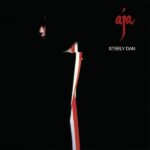 “Aja” – Steely Dan
“Aja” – Steely Dan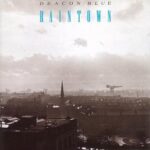 “Raintown” – Deacon Blue
“Raintown” – Deacon Blue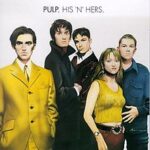 “His ‘n’ Hers” – Pulp
“His ‘n’ Hers” – Pulp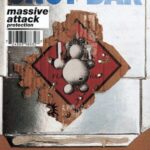 “Protection” – Massive Attack
“Protection” – Massive Attack

